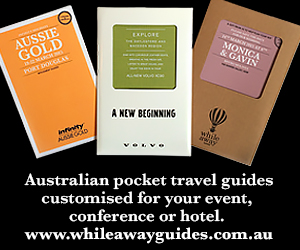It’s a small thing for some people, sure, but it suggests a well-run establishment, whose operators are mindful of the green sensibilities of many of today’s travellers.
I’m talking about the two-litre glass, recyclable bottles of drinking water that are provided in the 48 guest bedrooms of The District hotel, Boracay, one of the most beautiful of the 7,107 islands in the Philippines. As anyone who knows Asian beaches can attest, discarded plastic is a ubiquitous scourge, and in a small way The District is trying to do something about it.
The four-star hotel is set on Boracay’s famed White Beach, a stretch of gleaming talcum-power sand on the western side of the seven-kilometre-long island, in the busy central tourist area known as Station 2. This precinct’s unimaginative name belies the beauty of the beach itself – and of the hotel. It’s a delightful white-painted building whose cool interiors, symmetrical lines and elegant stone pathways and finishes are redolent of hostelries of the Greek islands and southern Spain.
 Standard room rates include round-trip transfers from the airport at Caticlan on an adjacent island, involving a private speedboat ride and a choice of breakfast or brunch buffet for two. The District is in fact the only resort on the island that offers guests the option of either breakfast or brunch as part of the regular rate, says Marketing and PR Manager Vina Mataganas.
Standard room rates include round-trip transfers from the airport at Caticlan on an adjacent island, involving a private speedboat ride and a choice of breakfast or brunch buffet for two. The District is in fact the only resort on the island that offers guests the option of either breakfast or brunch as part of the regular rate, says Marketing and PR Manager Vina Mataganas.
It’s great value for money for events and leisure visitors alike, Vina says. “You can have your late breakfast or brunch till 1pm, and guests enjoy complimentary massage samplers at our spa or complimentary drinks at the bar. In addition to the physical treats they enjoy personalised service, which I think is really at the core of a great resort or hotel.”
Wedding ceremonies are a key component of the District’s business, as are private dinners and corporate events. The conference room can accommodate up to 80, and can be easily converted into two rooms to cater for smaller groups. And there’s an events roof deck (and bar) that overlooks the beach. On this elevated first-floor perch guests can enjoy evening cocktails while watching the sun sink into the South China Sea.
The hotel’s MICE business is at present mostly local, but it also hosts international incentive visitors, says Vina. One recent group, for example, came from Russia.
 There’s a serene lap pool as well as a spa and fitness centre, and two restaurants serve as well-priced alternatives to the plethora of other outlets that front onto White Beach.
There’s a serene lap pool as well as a spa and fitness centre, and two restaurants serve as well-priced alternatives to the plethora of other outlets that front onto White Beach.
One of the District’s restaurants, the Caruso, has tables inside the hotel, on the ground floor, and set out on the beach after dark. (It will operate at The District until May 31 then be replaced later in the year by a new restaurant, The Plenary, offering comfort food, and a café, the House Brew.)
The breakfast and brunch buffets offer a variety of local and western fare, from fresh fruit and salads to Filipino dishes like fried pork and noodles. In an egg station, smiling chefs whip up omelettes to order, virtually in an instant. The buffet restaurant, The Star Lounge, has both alfresco and indoor areas, the latter suiting diners who prefer eating in cool surrounds.
But, undoubtedly, one of the most attractive features of the establishment is the beach itself. Guests leaving the hotel step, literally, from the front door onto the sand and into the shade of rustling palm trees. The azure water, fifteen metres away, is a balmy-bathwater temperature all year round.
“Most important of all, we know our guests by heart,” says Vina. “We offer unrivalled and personalised service; in fact we’re a consistent recipient of TripAdvisor’s Traveller’s Choice Award, mainly because of our service, as well as our location and facilities.”
From USD180 per day
Meeting package rates here range from PHP 1,800 (USD 36) to PHP 3,200 (USD 64) per person per day, depending on menu choice and whether organisers opt for half-board or full-board meals. Room rates start from PHP 9,900 (USD 198). “But we customise packages, which gives our guests flexibility in managing their budgets,” says Vina.
Events visitors, meanwhile, appreciate The District Boracay’s embrace of sustainability principles in a variety of ways. For example the hotel uses solar power to augment its electricity needs, via a hundred solar panels installed on the rooftops. “We’re for sustainable tourism; that’s why we make sure we do our part in offsetting our operation’s carbon footprint,” says Vina.
More information here.

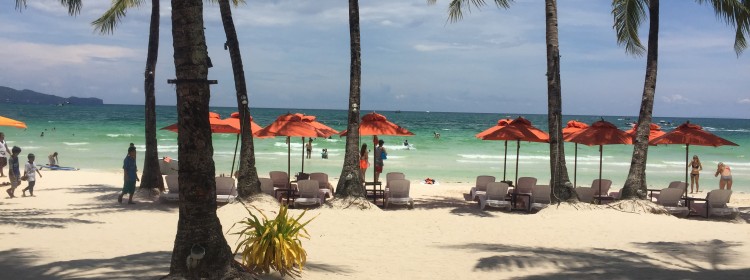


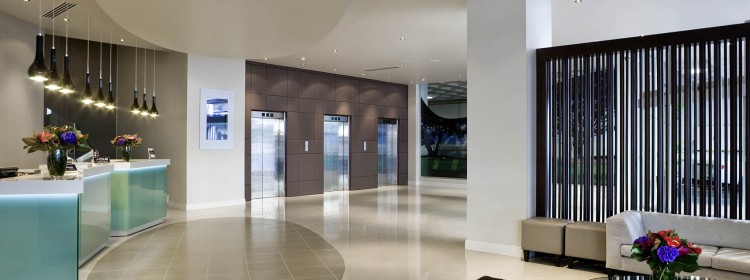
 Recently refurbished and soon to be rebadged as a more upscale, four-and-a-half-star Grand Mercure, the hotel has eight naturally lit meeting rooms, set on a dedicated conference floor that can accommodate up to 200 theatre-style and has a banquet capacity of up to 150.
Recently refurbished and soon to be rebadged as a more upscale, four-and-a-half-star Grand Mercure, the hotel has eight naturally lit meeting rooms, set on a dedicated conference floor that can accommodate up to 200 theatre-style and has a banquet capacity of up to 150. Business, generally, is brisk for the AccorHotels business in Auckland, where the French multinational has ten hotels (including Sofitel, Novotel, Pullman and Ibis) and where Sofitel So, another luxury property, will be opening at the beginning of next year, says Georgina.
Business, generally, is brisk for the AccorHotels business in Auckland, where the French multinational has ten hotels (including Sofitel, Novotel, Pullman and Ibis) and where Sofitel So, another luxury property, will be opening at the beginning of next year, says Georgina.


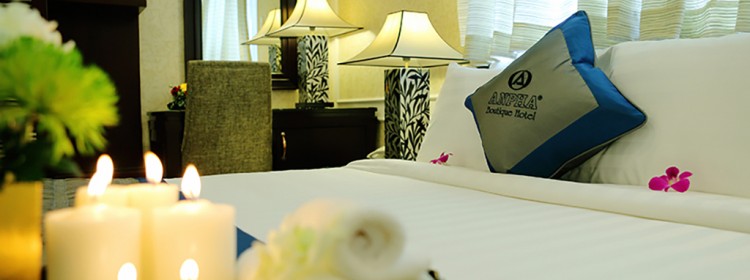
 The well-appointed rooms are tastefully decorated and uniformly immaculate, a credit to the housekeeping team. Many have balconies and a view over the Ben Thanh market, which occupies an entire block and sells everything from sugared frogs eggs to live fish, shoes, ornaments and underwear.
The well-appointed rooms are tastefully decorated and uniformly immaculate, a credit to the housekeeping team. Many have balconies and a view over the Ben Thanh market, which occupies an entire block and sells everything from sugared frogs eggs to live fish, shoes, ornaments and underwear. The young people manning reception are obliging and willing to arrange day tours for reasonable prices. Arguably the most fascinating of these is a trip to the Cu Chi Tunnels, 60 kilometres from the city, which starts from about AUD 50 per person, including pick up at the hotel and transport in an airconditioned bus. It takes around two hours to get there but it’s worth the effort. The tunnels are a 200-kilometre-long network of underground passageways in which up to 16,000 Viet Cong sheltered during the Vietnam War and from which they launched attacks on US troops and, in earlier years, on French colonists.
The young people manning reception are obliging and willing to arrange day tours for reasonable prices. Arguably the most fascinating of these is a trip to the Cu Chi Tunnels, 60 kilometres from the city, which starts from about AUD 50 per person, including pick up at the hotel and transport in an airconditioned bus. It takes around two hours to get there but it’s worth the effort. The tunnels are a 200-kilometre-long network of underground passageways in which up to 16,000 Viet Cong sheltered during the Vietnam War and from which they launched attacks on US troops and, in earlier years, on French colonists.
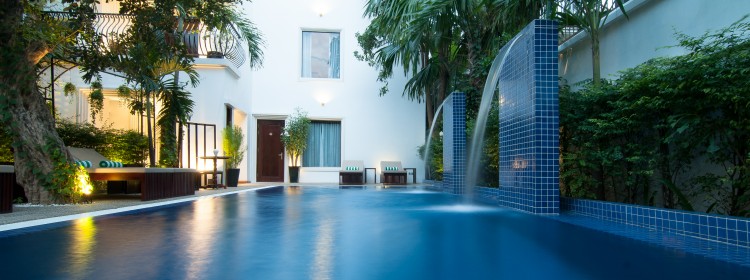
 “It’s not your fault,” I replied. “I’m the one who gave you the wrong dates in the first place; I should be apologising.”
“It’s not your fault,” I replied. “I’m the one who gave you the wrong dates in the first place; I should be apologising.” A dedicated meeting room can seat up to 20, and the two restaurants convert to versatile meeting spaces for 40 to 50 people, says a hotel spokesman. Moreover, as part of the deal, guests receive a free one-hour traditional Khmer massage and free access to the room minibar every day during their stay.
A dedicated meeting room can seat up to 20, and the two restaurants convert to versatile meeting spaces for 40 to 50 people, says a hotel spokesman. Moreover, as part of the deal, guests receive a free one-hour traditional Khmer massage and free access to the room minibar every day during their stay. During the serving of a multiple-course Khmer meal in the Suites’ main restaurant, for example, while a staff member performed a traditional Cambodian dance on a small stage, the food kept on coming. A piquant salad of chicken, mint, shaved vegetables and lime juice. Battered fish in coconut milk. Fragrant curries. Noodles and chilli.
During the serving of a multiple-course Khmer meal in the Suites’ main restaurant, for example, while a staff member performed a traditional Cambodian dance on a small stage, the food kept on coming. A piquant salad of chicken, mint, shaved vegetables and lime juice. Battered fish in coconut milk. Fragrant curries. Noodles and chilli.

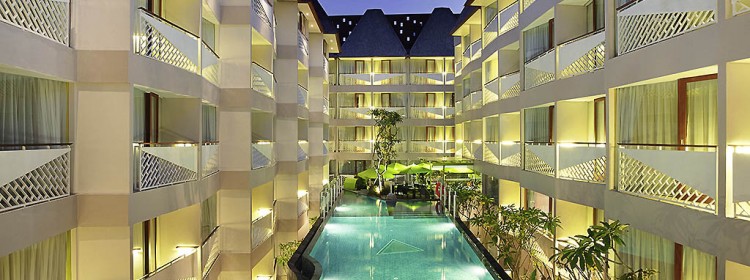

 Online room rates start at around AUD 50, and include a full breakfast. Meeting packages start at around AUD 24 for a half day, including lunch, AUD 30 per person for a full day, or AUD 43 for full-board meetings, including two coffee breaks, lunch and dinner. Also thrown in are welcome drinks, free internet and discounts of up to 20% in the on-site spa.
Online room rates start at around AUD 50, and include a full breakfast. Meeting packages start at around AUD 24 for a half day, including lunch, AUD 30 per person for a full day, or AUD 43 for full-board meetings, including two coffee breaks, lunch and dinner. Also thrown in are welcome drinks, free internet and discounts of up to 20% in the on-site spa.
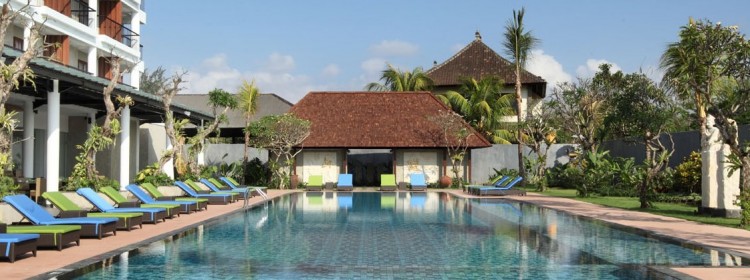
 A large, high-ceilinged breakfast terrace served by smiling staff in traditional Balinese gear looks out over an enormous blue swimming pool surrounded by walled tropical gardens of lawns, frangipani trees and shrubbery. On one side, a sign emblazoned with “Uluwatu Spa” beckons. I could relax here.
A large, high-ceilinged breakfast terrace served by smiling staff in traditional Balinese gear looks out over an enormous blue swimming pool surrounded by walled tropical gardens of lawns, frangipani trees and shrubbery. On one side, a sign emblazoned with “Uluwatu Spa” beckons. I could relax here. “We recently hosted a five-day conference for a business group of 70 people here very successfully, and we can easily accommodate up to 140 people theatre-style.”
“We recently hosted a five-day conference for a business group of 70 people here very successfully, and we can easily accommodate up to 140 people theatre-style.”
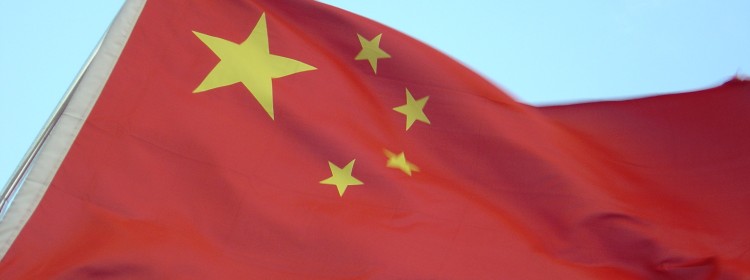
 That’s the key message, again, in Hotels.com’s latest Chinese International Travel Monitor, published last month. The fifth annual survey of its kind shows that despite a slowdown in the growth of Chinese overseas travel, 92% of travellers from the country plan to increase or maintain spending, and one-third plan to spend more on travel in the coming year.
That’s the key message, again, in Hotels.com’s latest Chinese International Travel Monitor, published last month. The fifth annual survey of its kind shows that despite a slowdown in the growth of Chinese overseas travel, 92% of travellers from the country plan to increase or maintain spending, and one-third plan to spend more on travel in the coming year.

 If you do have an agenda, don’t stick to it. That way more people can go off on tangents and bore everyone else. And only distribute the agenda shortly beforehand.
If you do have an agenda, don’t stick to it. That way more people can go off on tangents and bore everyone else. And only distribute the agenda shortly beforehand. Never record anything. If you do perchance come up with action plans, don’t make note of them or appoint someone to follow them up.
Never record anything. If you do perchance come up with action plans, don’t make note of them or appoint someone to follow them up.
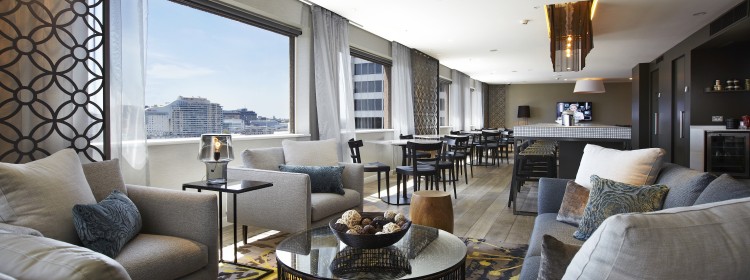
 “Price and location are definitely factors when you look at our meetings offer,” says Kurt, a thirty-year industry veteran who’s worked in South Africa, Singapore and China.
“Price and location are definitely factors when you look at our meetings offer,” says Kurt, a thirty-year industry veteran who’s worked in South Africa, Singapore and China. “One of our mottoes is to create experiences,” explains Kurt, “so when you come here for an event we can show clients places in the vicinity they won’t find on a tourism map – great bars with no names, the best coffee alleyways, local designer boutiques and similar best-kept secrets to exploring Sydney like a local.”
“One of our mottoes is to create experiences,” explains Kurt, “so when you come here for an event we can show clients places in the vicinity they won’t find on a tourism map – great bars with no names, the best coffee alleyways, local designer boutiques and similar best-kept secrets to exploring Sydney like a local.”
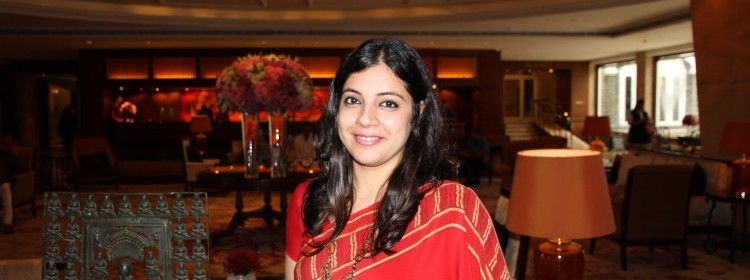

 For landlubbers it also enjoys a good strategic location in Mumbai’s main commercial hub. An hour from the airport, it’s close to the financial district, parliament, stadium, offices and shopping districts.
For landlubbers it also enjoys a good strategic location in Mumbai’s main commercial hub. An hour from the airport, it’s close to the financial district, parliament, stadium, offices and shopping districts. On average, for organisers who take say fifty rooms and up, the bed and breakfast-plus-taxes rate during the monsoon months would be in the INR 9,500 to INR 10,000 range, says Nisha. And a lunch and dinner buffet together would be around INR 7,000 plus taxes. That means all-up you’d be looking at INR 15,000 (USD 225) to INR 18,000 (USD 270) per person, based on a stay in the tower section which is aimed more at business travellers.
On average, for organisers who take say fifty rooms and up, the bed and breakfast-plus-taxes rate during the monsoon months would be in the INR 9,500 to INR 10,000 range, says Nisha. And a lunch and dinner buffet together would be around INR 7,000 plus taxes. That means all-up you’d be looking at INR 15,000 (USD 225) to INR 18,000 (USD 270) per person, based on a stay in the tower section which is aimed more at business travellers.